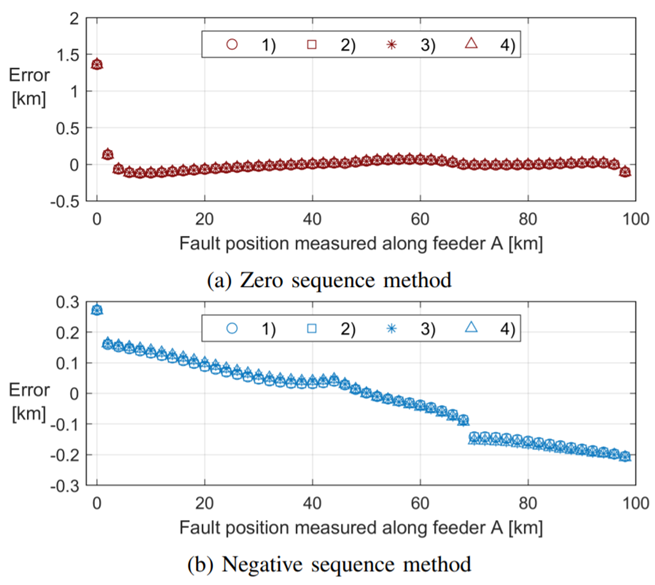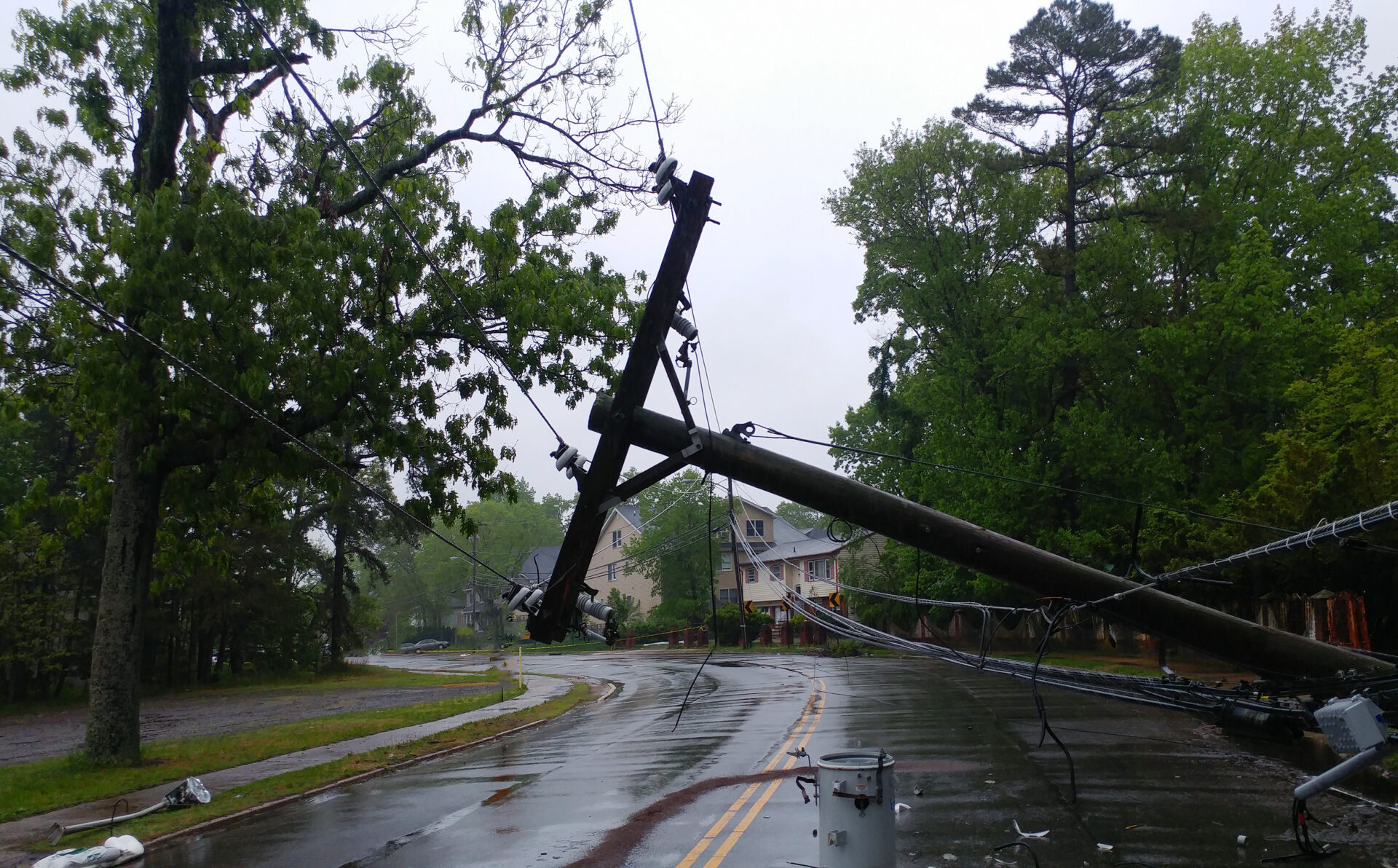Nowadays, the ever-increasing use of distributed generation (DG), the varying power loads and the resulting uncertainties, etc are forcing the distribution grid to change. In order to adapt to these new changes, the distribution power network is going through massive upgrade. More enhancement in terms of the application of new advanced control units, methods and automation of some important operations is anticipated in the near future.
Research project CINELDI (Centre for Intelligent Electricity Distribution) – attempts to investigate and address the challenges in this transformation of the distribution grid. It aims to help the digitalisation and modernisation of the electricity distribution grid in a cost-effective, flexible and robust manner. As part of this project, we have been working to develop new methods to automate the fault handling process in distribution networks focusing mainly on the capability to accurately locate faults in distribution grid so that maintenance and restoration of the service can be done as quickly as possible.
Self-healing networks
Faults in the electric grid are inevitable and cannot be avoided. The distribution grid will always be at the risk of power outage caused by weather, wildlife, falling of a tree, human error, malicious attack etc. Hence, the grid’s design and operation should be resilient against the inevitable occurrence of faults.
In this regard, one of the key features of smart grids is the self-healing capability to automatically detect, locate and isolate faults, and restore service within a very short time; from milli-seconds to seconds. In contrast, for conventional (the current) distribution networks, the fault location and service restoration have to be done manually and such maintenance works may take hours affecting large number of customers. Self-healing is achieved through the deployment of sensors for real time monitoring, and the use of intelligent devices for automated controls that can continually evaluate the state and condition of the network to accurately identify and isolate faults. It is also often accompanied by automated reconfiguration of the network to maximize security of supply and increase the reliability & efficiency of the grid.
The challenge with locating (earth) faults
Fault detection and location is a key functionality in self-healing, and it is the first step in the automation of the fault handling process. There are many well established methods for locating most short circuit (symmetrical or unsymmetrical) faults in the distribution network. However, among these fault types, there has not been a commonly accepted, reliable, and efficient method for single phase to earth fault location in ungrounded or compensated networks.
It is important to note that distribution grids in Norway are mostly either ungrounded or compensated networks and earth faults are the most common type of fault in the distribution network, representing 50 to 90% of faults in Nordic countries [2]. Hence, an accurate earth fault location in isolated systems is very crucial in improving the reliability and efficiency of the grid.
One of the main challenges with earth faults in isolated systems is that the fault current is too small to use it for an accurate detection of the fault or for calculating the distance to the fault point. Most of the methods developed so far often has limitations either on their applicability for different conditions (such as Impedance based methods) or on their implementation cost requiring advanced equipment and communication infrastructure (such as methods using Intelligent Electronic Devices (IEDs) and Fault Passage Indicators (FPIs)).
Exploiting new operational and architectural changes in the grid
The current distribution grid is operated radially. However, due to the large-scale addition of distributed generations and the higher demand for power quality and reliability, etc., it is anticipated that soon there will be a new type of operation (such as a ring or a weakly meshed operation) of the medium voltage network (6-33 kV). In the CINELDI project, we heavily work on the development of new methods and tools by exploiting the trends and opportunities arising from new operational and architectural changes in the distribution grid.
In our recent research work (Two novel current-based methods for locating earth faults in unearthed ring operating MV networks ), we have developed two novel methods that can be used to accurately locate earth faults in isolated systems by exploiting the possibilities arising from a [closed-loop] ring-type operation of medium voltage networks. The methods developed are also generic in such a way that they can also be used to locate other types of short circuit faults.
New methods for (earth) fault location
The two earth fault location methods are based on the sequence component of the current and a neutral voltage measurement at a primary substation. The first method is based on the utilisation of the change in negative sequence currents while the second method utilize the change in zero sequence current and neutral voltage measurement. The methods are simple to use and implement as they are based on a simple logic that utilize current and neutral voltage measurement at a primary MV substation.
Both methods were tested with a simulation of a network based on data provided by the Norwegian network operator, Elvia. The simulation result showed that the methods have very good accuracy in locating earth faults where the distance estimate error is within few hundred meters. The prediction performance of both methods was investigated considering different scenarios where the fault resistance, load asymmetry and measurement errors were varied. Both methods performed well and showed good accuracy in all the scenarios. As shown in the figure below, the error in negative sequence method is in the range of ± 250 meters while, for the zero-sequence based method, the distance estimate error in the range of 100 to 150 meters. In addition, the methods were also tested for specific cases where we consider different background network configuration, a resonance grounded system and the presence of distributed generations. In all the three cases, both methods yielded promising results.

In general, the simulation study showed that the two methods showed good accuracy in fault location in almost all the scenarios investigated. The negative sequence method yielded a relatively maximum distance estimate error, but it appears robust against most sources of error. The challenge with this method is the measurement of negative sequence currents which may not be readily available in most distribution networks. Whereas the zero-sequence method is likely easier to implement due to the availability of measurements, but it is found to be relatively less robust due to its dependency on some uncertain parameters such as the line ground capacitance of the ring connected feeders and the division of the sequence current among them (though our method provided equations to estimate these parameters).
Further validation and Implementation of the methods
The results from the simulation tests were promising and strengthens the prospect of further testing of the methods in real networks and adoption of the methods for a real-world implementation. Currently, there is an ongoing activity to first test the methods on a laboratory setup followed by a pilot test on a real power grid network, in cooperation with Elvia.
References
- Zerihun, T. et al. (2022) Two novel current-based methods for locating earth faults in unearthed ring operating MV networks, Electric Power Systems Research, volume (213)
- Hänninen S., et al., Single Phase Earth Faults in High Impedance Grounded Networks: Characteristics, Indication and Location, VTT Technical Research Centre of Finland (2001)









Comments
No comments yet. Be the first to comment!